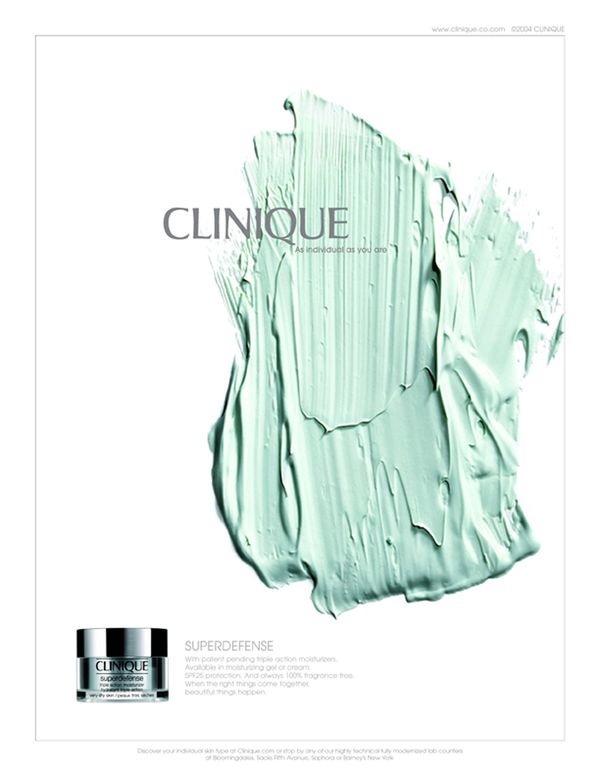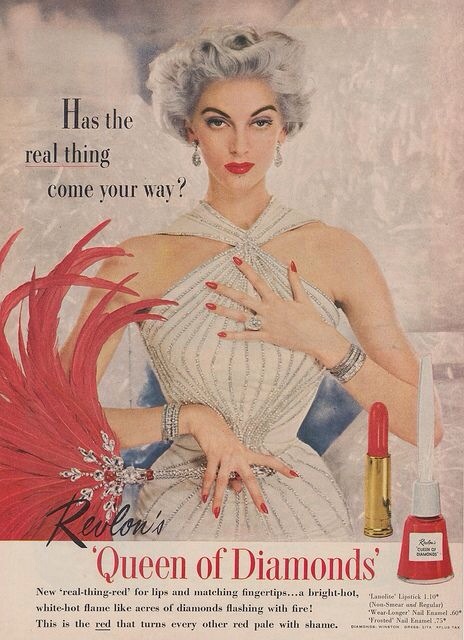I worked in advertising for a few months, fresh out of college. Inexperienced, but eager to learn. And oh did I learn…
It’s no longer a glamorous sector of the business world. It’s hard driven with competition, profit, fast paced deadlines and demands. Yes, these were still the factors of the time during the golden age of advertising (calling Don Drapper and all PamAm flight attendants). Yet, there seems to lack a sense of innovation.
Now with social media, digital outputs and clever promotional tie-ups , modern day advertising has taken it to the next level. Demand for the creative juices are now forcibly squeezed out of the agencies.
But, what am I to say for I’ve only worked in the field for less than one year. I’m here to talk about cosmetics and their advertisments.
When you think vintage advertising you visualize illustrated home mommies, smiling milk men, lots of cluttered text and big bright fonts of “buy now” or “it’s the best”. That until which in 1959 the agency DDB released the incredible “Think Small” campaign for Volkswagon. Altering advertising to what it is today.
Make up is not hard to sell It’s the brand. With so many identical products brands fight to get the consumer to gleam over the packaging, the contrasted hues, and to awe over the ideal woman with the use of their brand. In both yesterday’s and today’s makeup advertisments it is till the same motive. However, the approach is very different.

The early vintage ads (1940s) were keen on setting an example on how the product can be applied to their lifestyle. Shaping the idea that makeup is part of a woman’s life. (Feminist ideals in play right about now). Ads for brands such as Max Factor and Revlon would present how lipstick can keep you glamorous for the man of your dreams, or while packing his lunch. Again, let’s be thankful we live in a progressive society. The ads would also provide visuallization of what shade would suit you, the ways you can use the product and of course the sell point of the product. It also gave a gleam of happiness for the women. Living through the war, having a bit of glamour helped keep a light of happiness during such a dark time.


Today’s ads are highly minimal. It literally is product centric. Look at Clinic amd Georgio Armani’s campaigns compared to those vintage ones.



Huge difference? Because makeup has become a woman’s “essential” advertisers assume that there no longer needs to be a guide for the product. Simple text of the highlight of the product, and the strong brand name together SELLS.
Don’t think that vintage ads never had celebrity endorsers. Hollywood took big advantage of that. When Hollywood starlets such a Rita Hayworth and Marilyn Monroe were promoting for their newest picture they would be featured in a brands ad. Selling the everyday woman the same lipstick Marilyn wore in the movies or from her own personal “line”.


No difference today. We still see celebrity endorsed products. From Emma Stone for Revlon, Lorde for MAC and Rihanna’s Viv La Glam campaign for MAC. Yet, of course visually it’s minimal, clean, and more focused on the celebrity.


Both eras of advertising though have a similar angle. Towards the end of the 1950s brands such as Revlon began going on a high fashion stance. Post-war America was now gripping the glory and through the fashion it definitely showed. When they began to produce these ads makeup began to seem like an investment. The ads perceived a fantasy of glamour, richness, beauty and elegance. The life women of the post-war yearn for.



Today, the high fashion angle is played through creativity. MAC’s advertisements always used the products to show the capabilities. Mixing of the colors applied in artsy ways. Glittered eye shadow on the cheeks with a pink falsies and heavy blue cat eyes. Looks that the normal girl would probably never try, but the fact that they show the possibilities of their products is what makes them sell.


Overall, I love to see the progress of advertising. And this is one way of observing how far we’ve come in marketing and creativity. I personally prefer the vintage ads because they give emotion. Which is hard to execute in today’s ads, especially for cosmetics. Even though filled with content, it gave us a moment to look into the ad. Actually read it and understand. But, because we now have no time for anything, advertisements have been minimal and somewhat watered down. Which ads to you prefer?
Also something I noticed; most of the vintage ads have long copy, something that the adverts of today lack. Today’s generation truly is a visual one. 🙂
LikeLike
Such a cool post! I like both ads, but for different reasons. The vintage ads compell me to pay more attention to the products since I have to invest time reading. But the modern ads are extremely visually appealing, but I don’t feel as compelled to learn about the product. It’s super interesting.
LikeLike
I’m glad you like the post and I agree!
LikeLiked by 1 person